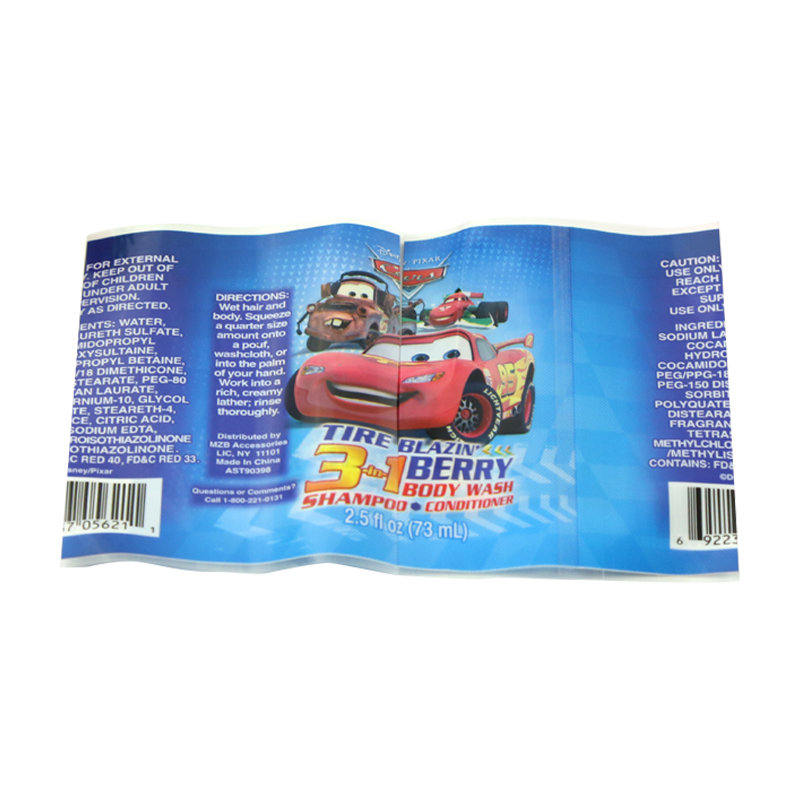2025-07-24
In the competitive world of bottled product packaging, brands continuously seek innovative ways to enhance product presentation while ensuring security and authenticity. Among the effective solutions gaining widespread adoption are PVC shrink film labels—a versatile and practical packaging technology that offers a sleek finish coupled with tamper-evident functionality.
PVC (Polyvinyl Chloride) shrink film labels have become a trusted choice for many industries including beverages, personal care, pharmaceuticals, and household products. Their ability to conform tightly to bottle contours after heat application makes them ideal for creating visually appealing and secure packaging.
What Are PVC Shrink Film Labels?
Shrink film labels are flexible plastic films printed with brand graphics and cut to size. The unique property of these films is their capacity to shrink uniformly when exposed to heat—typically above 90°C—allowing the film to contract snugly around the bottle shape.
PVC is one of the commonly used materials for these films due to its shrinkability, clarity, and durability. When heat is applied through a heat tunnel or steam chamber, the PVC film tightly molds to the bottle’s surface, providing a seamless and tamper-evident wrap.
Benefits Fueling Industry Growth
1. Tamper-Evident Security
One of the major drivers behind the popularity of PVC shrink labels is their inherent tamper-evident nature. Once shrunk around the bottle neck or body, any attempt to remove or alter the label is clearly visible, giving consumers confidence in product integrity and safety.
This is especially important for products such as hand sanitizers, pharmaceuticals, or high-value beverages where trust and regulatory compliance are critical.
2. Visual Appeal
PVC shrink films provide an exceptionally smooth surface that showcases high-quality printing with vivid colors and sharp details. The ability to shrink evenly around complex bottle shapes—including curves, ridges, and embossing—ensures the label remains wrinkle-free and visually consistent.
This versatility allows brands to create striking designs that stand out on shelves, boosting consumer engagement and recognition.

3. Enhanced Product Differentiation
With PVC shrink film labels, manufacturers can customize every aspect—from size and shape to finish and texture. This customization helps differentiate products in crowded markets and supports seasonal or promotional packaging without the need for retooling bottle molds.
Additionally, shrink sleeves can cover the entire bottle or just specific sections, allowing for innovative design concepts like full-body wraps or tamper bands.
4. Durability and Protection
PVC films are known for their toughness and resistance to moisture, abrasion, and chemicals. This durability protects the underlying bottle label or printing from scratches and environmental damage during handling, shipping, and retail display.
Moreover, the film serves as an additional layer safeguarding contents from contamination and tampering.
Industry Applications and Use Cases
PVC shrink film labels find applications across a diverse range of sectors, including:
Beverage Industry: Soft drinks, water bottles, craft beers, and spirits benefit from vibrant, full-wrap shrink sleeves that enable 360-degree branding.
Personal Care and Cosmetics: Shampoo, lotion, and skincare bottles use shrink labels for an elegant finish combined with tamper evidence.
Household Cleaners and Chemicals: Shrink labels provide protective sealing and clear safety information for chemical products.
Pharmaceuticals and Healthcare: Medicine bottles utilize tamper-evident shrink bands to ensure regulatory compliance and consumer trust.
Food Products: Specialty sauces and condiments employ shrink sleeves for enhanced shelf visibility and secure packaging.
Challenges and Innovations
Despite their advantages, PVC shrink film labels face certain challenges that the industry continues to address:
Environmental Concerns: PVC is less favored in some markets due to recycling difficulties and environmental impact. This has spurred interest in alternative materials like PET and OPS films, which offer similar performance with improved sustainability profiles.
Energy Consumption: Heat shrinking requires significant energy input, prompting manufacturers to explore more energy-efficient shrink tunnels and lower-temperature shrink films.
Adhesion and Compatibility: Ensuring the shrink film bonds well with various bottle materials and coatings can be technically demanding.
To mitigate these issues, producers are innovating with bio-based and recyclable shrink films, enhanced adhesives, and optimized application processes.